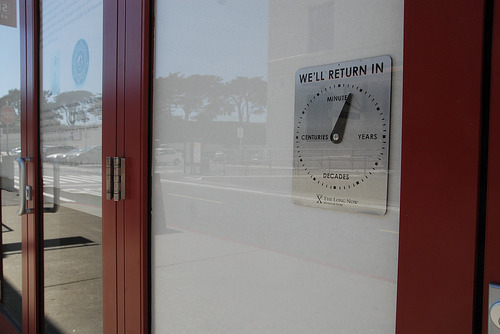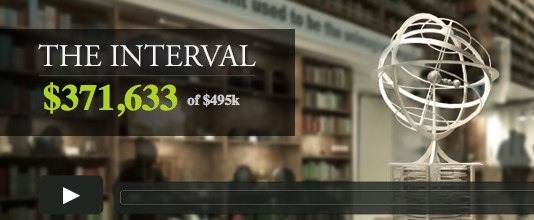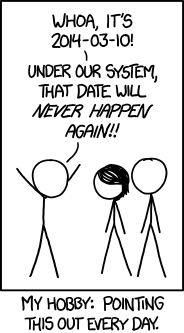Stewart Brand's Blog, page 57
March 20, 2014
Construction of The Interval at Long Now: Shelves and Booths

photos by Catherine Borgeson (except where noted)
We’ve talked a lot in recent weeks about the Manual for Civilization and all the books we are adding based on suggestions from Brian Eno, Kevin Kelly, Maria Popova, Violet Blue, Stewart Brand and others (see the lists). Now we can start to show you where those books will go at The Interval, as the first of our floor-to-ceiling library shelves are put in place.
We love the images that our designers put together of The Interval. See them here, where you can also donate to help us complete funding of the project. And get amazing Long Now stuff as a thank you.
But it gets really exciting when we can compare the design to what the space looks like today. There’s been huge progress recently, you can see the new venue starting to emerge from the concrete dust and tool-strewn worksite. Here’s what it looked like in January when Brian Eno visited the site:
 Brian Eno visited The Interval construction in January
Brian Eno visited The Interval construction in January
photo by Alexander Rose
We have come a long way since the photo above with all the electrical, plumbing and walls done now.
We have featured the original concrete and steel as a tribute to when this space was the blacksmith shop in the days when the US Army ran Fort Mason.
Just this week the built-in seating was installed:
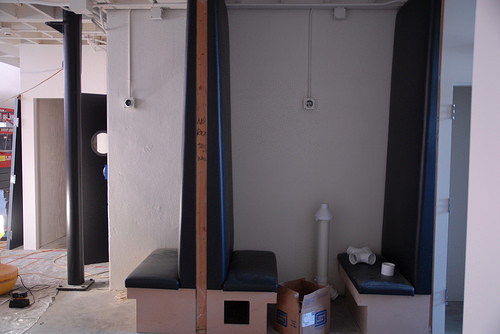
And here are the same booths in cardboard and in concept….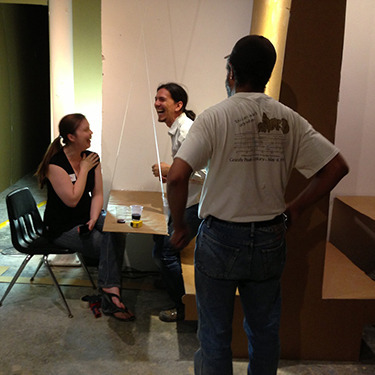

Soon. Not yet days. But weeks not months or years. It won’t be too long… Help us build it.

March 19, 2014
Edward Burtynsky: The 10,000-year Gallery – A Seminar Flashback
In October 02008 Edward Burtynsky spoke for Long Now on The 10,000-year Gallery. Burtynsky, an internationally-recognized photographer, presented his ideas for a gallery of images to accompany the Clock of the Long Now.
Twice a month we highlight a Seminar About Long-term Thinking (SALT) from our archives. Long Now members can watch this Seminar video here, and this talk is even better with the visuals.
SALT audio is free for everyone on our Seminar pages and via podcast. Long Now members can see all Seminar videos in HD. Video of the 12 most recent Seminars is also free for all to view.
Burtynsky’s The 10,000-year Gallery talk includes a formal proposal for a permanent art gallery in the chamber that encloses the 10,000-year Clock as well as the results of his research into methods of capturing images that might have the best chance to survive in the long-term.
From Stewart Brand’s summary of this Seminar (in full here):
On the stage Burtynsky showed a large carbon transfer print of one of his ultra-high resolution photographs. The color and detail were perfect. Accelerated studies show that the print could hang in someone’s living room for 500 years and show no loss of quality. Kept in the Clock’s mountain in archival conditions it would remain unchanged for 10,000 years. He said that making one print takes five days of work, costs $2,000, and only ten artisans in the world have the skill, at locations in Toronto, Seattle, and Cornwall.
Edward Burtynsky‘s photographs are collected in museums all over the world. He is known for his large-format photographs of industrial landscapes which include mining locations around the globe and the building of Three Gorges Dam in China. His work has been noted for beautiful images which are often at odds with their subject’s negative environmental impacts. In recent years his work has focused on water including oil spills around the world.
The Seminars About Long-term Thinking series began in 02003 and is presented each month live in San Francisco. The series is curated and hosted by Long Now’s President Stewart Brand. Seminar audio is available to all via podcast.
Long Now members can watch the full video of this Seminar here—you must be logged in to the site. Membership levels start at $8/month and include lots of benefits. Join Long Now today.

March 18, 2014
Kevin Kelly’s Selected Books for the Manual for Civilization

Kevin Kelly selecting books for the Manual For Civilization (photo by Catherine Borgeson)
Today we continue the series of posts featuring the books suggested for the Manual for Civilization with a large list from Long Now Founding Board Member Kevin Kelly. In all we hope to have as many as 3,500 volumes to form a corpus which could sustain or rebuild civilization. To broaden our selection process we’ve asked Long Now members and Interval at Long Now donors to suggest books for the list.
Last week one of our members, Maria Popova, who writes the great blog Brain Pickings, gave us her list of 33 books. We are big fans of her work, and we are honored to include her excellent selections. They join about 1,800 other books suggested so far by Long Now’s members, donors and friends. There is still room for a few thousand more suggestions…
To add your own recommendations of books to include in the Manual for Civilization and vote on which suggested titles should find a place on The Interval’s shelves, just make a donation to support the project. All donors, at any level, can suggest and vote on books. We have raised over $35,000 in the last month, but still need your help to complete this “brickstarter” funding campaign.
For this week’s update Kevin Kelly gave us a tour of his personal library as he made his choices for the Manual for Civilization. Among his many accomplishments, Kevin has ridden a bike or walked across several continents, has written for the Whole Earth Catalog, was founding editor of Wired, and has himself written several books–most recently the New York Times acclaimed Cool Tools.
Kevin has a knack for finding the most useful books in the world. In fact, he gave us the largest list of suggestions yet: nearly 200 in all. Pulled directly from the shelves of his own library, he gave us books that document practical skills, how to make useful things, and that teach and improve those who read them. Many of these books also appear as tools on his Cool Tools blog (now co-edited by Mark Frauenfelder).
You can see the entire list below and we pulled a few choice selections up to the top that are exemplary of the list, and some of these include his own comments (if you don’t see 200 hundred books listed below just hit read the rest of this entry link):
Practical Bamboos:The 50 Best Plants for Screens, Containers and More:
“I own a lot of bamboo books, but Practical Bamboos is by far the most useful of all. Other bamboo books are more encyclopedic; this one focuses on “only” the 50 most useful bamboo species, spelling out what types are good for fence rows, which are drought resistant, which work well in containers, and how to identify those variants from lookalikes. There’s very specific growing tips for each variety and solid advice about the principles of growing bamboo plants in general.”Caveman Chemistry: 28 Projects, from the Creation of Fire to the Production of Plastics by Kevin M. Dunn
The Soundscape:
“The sound of modern life has a 60 hertz hum in the background because that’s the frequency of electricity (in North America). Add to that all the other vibrations of technological artifacts and all the sounds made by nature and you get the soundscape of the world. I learned to hear this sonic environment from this master observer. He gave me ears.”The Backyard Blacksmith by Lorelei Sims
A Museum of Early American Tools:
“A story is told by each tool archived in this paper museum. The tool reveals the amazing things that can be done with your own body’s power, regulated by your eye and mind. Listening to the tool, you can understand how things are made. Not only do these tools run without electricity, they can be made with other hand tools. There’s enough information in these packed drawings by Eric Sloane to enable you to make them yourself, to use to make other things. It’s kind of magical.”Civilizations: Ten Thousand Years of Ancient History by Jane McIntosh and Clint Twist
Storey’s Guide to Raising Rabbits:
“For nearly 40 years this guide has introduced boy scouts, 4H-ers, homesteaders, survivalists, and pet keepers to the practicalities of raising rabbits. Now in a new 4th edition, it’s still the best manual for getting started with rabbits for food or show.”Tending the Wild: Native American Knowledge and the Management of California’s Natural Resources by M. Kat Anderson
View from the second floor of Kevin Kelly’s home library (photo by Catherine Borgeson)Mirror Worlds by David Gelernter
Systemantics: The Underground Text of Systems Lore by John Gall
Libraries in the Ancient World by Lionel Casson
The Structure of Evolutionary Theory by Stephen Jay Gould
The Past From Above by Georg Gerster
Grand Design: The Earth From Above by Georg Gerster
Infinite Worlds: The Fantastic Visions of Science Fiction Art by Vincent Di Fate
Five Kingdoms: An Illustrated Guide to the Phyla of Life on Earth (3rd Edition) by Lynn Margulis and Karlene V. Schwartz
A Synoptic Classification of Living Organisms edited by R.S.K. Barnes
The Ultimate Resource 2 by Julian Lincoln Simon
Biospheres: Metamorphosis of Planet Earth by Dorion Sagan
Biosphere 2: The Human Experiment by John L. Allen
Limited Wants, Unlimited Means: A Reader On Hunter-Gatherer Economics and the Environment edited by John Gowdy
[image error]Kevin Kelly’s personal copy of “Limited Wants, Unlimited Means” (photo by Catherine Borgeson)
The Complete Works of William R. Corliss
Dowsing: A Journey Beyond Our Five Senses by Hamish Miller
The Stars by H.A. Rey
The Millennial Project: Colonizing the Galaxy in Eight Easy Steps by Marshall Savage
Powers of Ten: About the Relative Size of Things in the Universe by Phylis Morrison and Phillip Morrison
Mathematics from the Birth of Numbers by Jan Gullberg
The Annotated Flatland: A Romance of Many Dimensions by Edwin A. Abbott
The Structure of Scientific Revolutions (3rd Edition) by Thomas S. Kuhn
Re-search: Pranks! & Pranks 2 edited by V. Vale and Andrea Juno
The United States Constitution: A Graphic Adaptation by Jonathan Hennessey
The Discoverers: Volumes I and II Deluxe Illustrated Set by Daniel J. Boorstin
Civilizations of the World, Single Volume Edition: The Human Adventure (3rd Edition) by Richard L. Greaves, Robert Zaller, Philip V. Cannistraro and Rhoads Murphey
The Heritage of World Civilizations: Brief Edition, Combined Volume (5th Edition) by Albert M. Craig, William A. Graham, Donald Kagan, Steven Ozment and Frank M. Turner
Atlas of the Year 1000 by John Man
The Cartoon History of the Modern World (& p2, p3) by Larry Gonick
Third Views, Second Sights: A Rephotographic Survey of the American West by Mark Klett, Kyle Bajakian and William L. Fox
Secret Museum of Mankind by David Stiffler
A History of Technology and Invention: Progress Through the Ages, Volume I: The Origins of Tech (and Volume II) by Maurice Daumas
Future Shock by Alvin Toffler
The Year 2000: A Framework for Speculation on the Next Thirty-Three Years by Herman Kahn and Anthony J. Wiener
Today Then: America’s Best Minds Look 100 Years into the Future on the Occasion of the 1893 World’s Columbian Exposition compiled by David Walter
Yesterday’s Tomorrows: Past Visions of the American Future by Joseph J. Corn and Brian Horrigan
Future Perfect: Vintage Futuristic Graphics by Jim Heimann
The Wonderful Future that Never Was: Flying cars, mail delivery by parachute and other predictions from the past by Gregory Benford and the Editors of Popular Mechanics
People’s Almanac Presents: The Book of Predictions by David Wallechinsky, Amy Wallace and Irving Wallace
Century’s End: An Orientation Manual Toward the Year 2000 by Hillel Schwartz
The Encyclopedia of Science Fiction by John Clute and Peter Nicholls
The Faber Book of Utopias edited by John Carey
The Selfish Gene by Richard Dawkins
The Story of Writing: Alphabets, Hieroglyphs & Pictograms by Andrew Robinson
Writing Systems of the World: Alphabets, Syllabaries, Pictograms by Akira Nakanishi
The Traditional Crafts of Persia: Their Development, Technology and Influence on Eastern and Western Civilizations by Hans E. Wulff
The Traditional Bowyer’s Bible, Volume 1 , Volume 2, Volume 3 edited by Jim Hamm
American Flintknappers: Stone Age Art in the Age of Computers by John C. Whittaker
A Short History of Technology: From the Earliest Times to A.D. 1900 by T. K. Derry and Trevor I. Williams
The Foraging Spectrum: Diversity in Hunter-Gatherer Lifeways by Robert L. Kelly
The Universe Story: From the Primordial Flaring Forth to the Ecozoic Era: A Celebration of the Unfolding of the Cosmos by Brian Swimme and Thomas Berry
Why Things Bite Back: Technology and the Revenge of Unintended Consequences by Edward Tenne
Wheels, Clocks, and Rockets: A History of Technology by Donald Cardwell
The Golden Book of Chemistry Experiments: How to set up a home laboratory: Over 200 simple experiments by Robert Brent
Illustrated Guide to Home Chemistry Experiments: All Lab, No Lecture by Robert Bruce Thompson
How to Make a Miniature Zoo by Vinson Brown
40 Principles: TRIZ Keys to Technical Innovation, Volume 1 by Genrich Altshuller, Lev Shulyak and Steven Rodman
Manual of Formulas: Recipes, Methods & Secret Processes by Raymond B. Wailes
The Boy Electrician by Alfred Morgan
The Complete Illustrated Guide to Everything Sold in Hardware Stores and Garden Centers (Except the Plants) by Steve Ettlinger
Atlas of Human Anatomy (5thEdition) by Frank H. Netter MD
How to Read a Book: The Classic Guide to Intelligent Reading by Mortimer J. Adler and Charles Van Doren
The New Lifetime Reading Plan: The Classical Guide to World Literature, Revised and Expanded by Clifton Fadiman and John S. Major
Infrastructure: A Field Guide to the Industrial Landscape by Brian Hayes
We Came in Peace for All Mankind: The Untold Story of the Apollo 11 Silicon Disc by Tahir Rahman
Letter Fountain by Joep Pohlen
Your Memory: How It Works and How to Improve It by Kenneth L. Higbee Ph.D
The Memory Book: The Classic Guide to Improving Your Memory at Work, at School and at Play by Harry Lorayne and Jerry Lucas
The Lost Art of Towel Origami by Alison Jenkins
The Lore of Still Building by Kathleen Howard
The Ashley Book of Knots by Clifford W. Ashley
Country Wisdom & Know-How by the Editors of Storey Publishing’s Country Wisdom Boards
Materials, Structures, and Standards: All the Details Architects Need to Know but can Never Find by Julia McMorrough
Basic Butchering of Livestock & Game by John J. Mettler
The Art and Craft of Natural Dyeing: Traditional Recipes for Modern Use by J.N. Liles
Root Cellaring: Natural Cold Storage of Fruits & Vegetables by Mike Bubel
Storey’s Guide to Raising Chickens, 3rd Edition by Gail Damerow
Language Acquisition Made Practical: Field Methods for Language Learners by E. Thomas Brewster and Elizabeth S. Brewster
A Reverence for Wood by Eric Sloane
Hawke’s Special Forces Survival Handbook by Mykel Hawke
Understanding Wood: A Craftsman’s Guide to Wood Technology by R. Bruce Hoadley
Where There Is No Doctor: A Village Health Care Handbook by David Werner and Jane Maxwell
Where There is No Dentist by Murray Dickson
Story: Substance, Structure, Style and the Principles of Screenwriting by Robert McKee
The History of Science and Technology: A Browser’s Guide to the Great Discoveries, Inventions, and the People Who Made Them from the Dawn of Time to Today edited by Bryan Bunch and Alexander Hellemans
The New Way Things Work by David Macaulay
Stephen Biesty’s Incredible Cross-Sections by Richard Platt
Stephen Biesty’s Incredible Explosions: Exploded Views of Astonishing Things by Richard Platt
Mosque by David Macaulay
The Universal History of Numbers: From Prehistory to the Invention of the Computer by Georges Ifrah
Listening to Stone by Dan Snow
The Penguin Companion to Food by Alan Davidson
Uncommon Fruits and Vegetables: A Commonsense Guide by Elizabeth Schneider
The Humanure Handbook: A Guide to Composting Human Manure (2nd Edition) by Joseph Jenkins
Water Storage: Tanks, Cisterns, Aquifers, and Ponds for Domestic Supply, Fire and Emergency Use by Art Ludwig
The New Create an Oasis with Greywater: Choosing, Building and Using Greywater Systems: Includes Branched Drains by Art Ludwig
The Septic System Owner’s Manual by Lloyd Kahn
The Barefoot Architect by Johan van Lengen
Primitive Technology: Volumes 1-2 edited by David Wescott
Mammal Tracks & Sign: A Guide to North American Species by Mark Elbroch
Sailmaker’s Apprentice by Emiliano Marino
Sailboats You Can Build by Peter Stevenson
Building the Six-Hour Canoe by Richard Butz
The Reef Set: Reef Fish, Reef Creature and Reef Coral (3 Volumes) by Paul Humann and Ned Deloach
Living on an Acre: A Practical Guide to the Self-Reliant Life by U.S. Department. of Agriculture
Nature’s Garden: A Guide to Identifying, Harvesting, and Preparing Edible Wild Plants by Samuel Thayer
Gödel, Escher, Bach: An Eternal Golden Braid by Douglas R. Hofstadter
How Buildings Learn: What Happens After They’re Built by Stewart Brand
The Forager’s Harvest: A Guide to Identifying, Harvesting, and Preparing Wild Edible Plants by Samuel Thayer
Lightly on the Land: The SCA Trail Building And Maintenance Manual (2nd Edition) by Robert C. Birkby
The Book of Bamboo: A Comprehensive Guide to This Remarkable Plant, Its Uses, and Its History by David Farrelly
The Scientific American Book of Projects for the Amateur Scientist by Clair L Stong
The New Horse-Powered Farm: Tools and Systems for the Small-Scale, Sustainable Market Grower by Stephen Leslie
Seeds: The Definitive Guide to Growing, History, and Lore by Peter Loewer
The Merck Manual by Robert S. Porter
On Growth and Form: The Complete Revised Edition by D’Arcy Wentworth Thompson
Backyard Sugarin’: A Complete How-To Guide (3rd Edition) by Rink Mann
“How-to” Build This Log Cabin for $3,000 by John McPherson
The Complete Modern Blacksmith by Alexander Weygers
The Compleat Meadmaker : Home Production of Honey Wine From Your First Batch to Award-winning Fruit and Herb Variations by Ken Schramm
Basketry: A World Guide to Traditional Techniques by Bryan Sentance
Worms Eat My Garbage: How to Set Up and Maintain a Worm Composting System by Mary Appelhof
The Art of Fermentation: An In-Depth Exploration of Essential Concepts and Processes from Around the World by Sandor Ellix Katz
The Way to Make Wine: How to Craft Superb Table Wines at Home by Sheridan Warrick
Origins of Futuristic Fiction by Paul K. Alkon
Crystal Set Projects: 15 Radio Projects You Can Build by Philip Anderson
Rare Earth: Why Complex Life is Uncommon in the Universe by Peter D. Ward and Donald Brownlee
The Collected Papers of Albert Einstein, Volumes 1-11 (Original texts)
Mushrooms Demystified by David Arora
Sky Atlas 2000.0 Companion (most recent edition) by Robert Strong and Roger Sinnott
Mushrooming without Fear: The Beginner’s Guide to Collecting Safe and Delicious Mushrooms by Alexander Schwab
The Art of Computer Programming, Volumes 1-4A by Donald E. Knuth
Many thanks to Kevin Kelly for taking the time and care to recommend these books for our collection.
His list adds to suggestions from Maria, Violet Blue, Stewart Brand, Brian Eno and dozens of Long Now members and supporters. The process of making these lists is ultimately very personal. Choosing the books that best embody, inspire, and inform Civilization is a subjective choice. The thought-process it requires is one of the reasons for initiating this collection. What books would you choose?
You can visit the Manual in person and drink coffee, tea or a cocktail while reading up on rabbit raising and bamboo cultivation at The Interval at Long Now. The Interval opens later this year in San Francisco, it is nearly complete.
Thanks to many of you we have raised over 3/4 of our “brickstarter” goal. So we are asking for your generous support to help us finish construction and complete this project including acquiring books for the Manual for Civilization.
As we approach The Interval opening this Spring, we will continue this series of lists suggested by friends and associates of Long Now for the Manual. You’ll see books recommended by Neal Stephenson, Megan & Rick Prelinger, Danny Hillis, Neil Gaiman, Mark Pauline, and more.

March 15, 2014
Alexander Rose Speaking at Chabot Space & Science Center
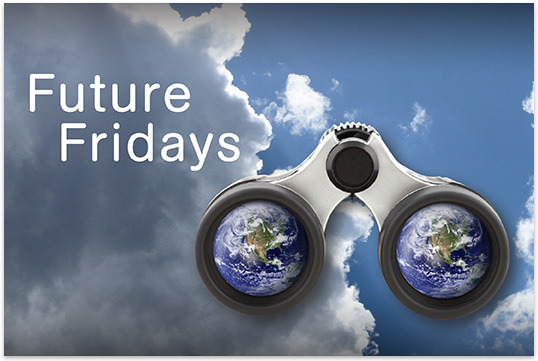 On Friday March 21st, the Executive Director of The Long Now Foundation, Alexander Rose, will be speaking about The 10,000-Year Clock at the Chabot Space & Science Center in Oakland. The talk is part of their Future Fridays speaking series, which brings science and technology leaders to the Bay Area for conversation with the community. Past speakers include Bill Nye, Michio Kaku, and Robert Weiss; upcoming 02014 speakers include former SALT speakers Ed Moses and Will Wright.
On Friday March 21st, the Executive Director of The Long Now Foundation, Alexander Rose, will be speaking about The 10,000-Year Clock at the Chabot Space & Science Center in Oakland. The talk is part of their Future Fridays speaking series, which brings science and technology leaders to the Bay Area for conversation with the community. Past speakers include Bill Nye, Michio Kaku, and Robert Weiss; upcoming 02014 speakers include former SALT speakers Ed Moses and Will Wright.
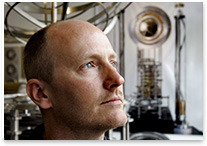 The Chabot Space & Science Center is offering Long Now Members discounted advanced tickets for this talk. Tickets can be found here, and the member discount code is “RSVP1014”.
The Chabot Space & Science Center is offering Long Now Members discounted advanced tickets for this talk. Tickets can be found here, and the member discount code is “RSVP1014”.
For more information on the talk and the series, please visit the Future Fridays website.
We hope to see you there!

March 13, 2014
The Chalkboard Robot for The Interval
Viktor – 5000 Years of Chairs, by Jürg Lehni
One of the features we’ve included in our design for The Interval at Long Now from the very beginning has been a chalkboard robot. To be located next to the presenter screen, we imagined it could be used live in presentations, write Long Bets challenged at the bar, or write live messages and menu items. We had thought that we would be developing this robot ourselves, until we were introduced to the work of Swiss artist Jürg Lehni. With support by Swissnex, Jürg recently visited San Francisco to participate in shows with SOMArts and the SFMOMA with his very own chalk drawing machine called Viktor (shown in the video above). We contacted Jürg while he was in town, and as chance would have it, he was just then including references to Stewart Brand, the Well, and the Whole Earth Catalog into the live drawing event he would be participating in that evening (click on the image below to see what it drew that night).
We invited Jürg to Long Now the next week, and discussed how we might work together. We are now pleased to announce that we have commissioned Jürg and his team in Switzerland to build a custom version of his chalkboard robot for our space, as well as the software to interface with it. We will also be working with Jürg to develop content for the robot and figure out how to make it a platform for use by visiting speakers and artists.
The design is extremely elegant and robust, using an unconventional system of pulleys that is driven by high-quality Maxon Swiss servo motors to triangulate the drawing tool. The motors are coordinated by an open-source controller developed by Jürg himself. We will be bringing Jürg back to San Francisco for installation and commissioning of the robot this spring. All we need now is your help to finish fundraising for the space, so we can make this happen.
We are in the home stretch. Every donation counts! Please donate to help us raise the last $100,000 and create an amazing place for us all.
You can see more about artist Jürg Lehni and his amazing robots at his site here.

March 11, 2014
Violet Blue’s Selected Books for the Manual for Civilization

Violet Blue in front of her library. Photo courtesy of Violet Blue
Continuing our series of posts highlighting books suggested for our Manual for Civilization library at The Interval, today we have a specialized list selected by Violet Blue. As a library designed to help sustain or rebuild civilization, one of the first categories that came to mind were sexuality and reproduction. A civilization cannot have a future without either.
We asked Violet Blue to curate a set of books on sexuality as she is an award-winning sex author & blogger. It also turns out that in her past she was a book reviewer for Good Vibrations selecting books related to sexuality for their library, much of which is now contained at San Francisco’s Center for Sex and Culture.
The 16 books on sexuality that Violet Blue recommended are below with her comments on each selection. They will become part of the 3,500-volume collection. We will also soon be publishing a list of books on birth and reproduction suggested by midwife and nurse practitioner Ami Burnham.
The Manual will serve as the library for The Interval at Long Now, our new public space opening this Spring. Recently we’ve shared Brian Eno and Stewart Brand’s Manual suggestions, and we have more lists to come including those from Neil Gaiman, Kevin Kelly, Neal Stephenson, and Megan and Rick Prelinger. Our Interval donors and Long Now members can also recommend books and vote on those already suggested. Please help us raise the remaining funds required to fill our shelves with these thoughtfully chosen books.
Violet suggested reference books, science books and erotica; volumes on gender, how to talk to kids about sex, and even robots. Titles below marked with ** were suggested for inclusion by fellow sexuality expert Susie Bright. Here’s the list:
The Guide to Getting it On (7th edition) by Paul Joannides
This book is so accurate and complete about everything surrounding sexual contact, there’s no need for individual books on specific acts, health concerns or even sexual mishaps. Warm, welcoming, fun, smart, explicit and illustrated, it leaves no question about adult sexuality unanswered and expertly weaves together sex information from our greatest sex researchers and contemporary sex educators alike.
What Makes A Baby by Cory Silverberg, Fiona Smyth
If there’s one book for helping kids understand sexuality and gender, this book (appropriate for all ages) is wonderfully accessible, complete and makes the “big talk” into a lovely narrative about family.
My (New) Gender Workbook by Kate Bornstein
This smart, humorous workbook is essential for understanding gender as it relates to our sexual identities, our sexual roles, and the way we identify and our understand sexual orientation – as well as the experiences of others (including our loved ones).
Erotic Fantasies, A Study of the Sexual Imagination by Phyllis and Eberhard Kronhausen**
At the heart of human sexuality, we find the richness, complexity and necessity of human sexual fantasies. Standing on the shoulders of the Kinsey Report, this book is both at once an explicit compendium of fantasies, an informative exploration of what fantasies are, and a guide to why they’re inextricably woven into the fabric of our sexual selves.
Erotica Universalis by Gilles Neret
Beautiful, striking, lurid, romantic, informative, and above all – unbridled insight into the erotic imagination, obsessions, traditions and sexual desires of a human civilization are between the covers of this erotic art bestiary. A tasteful collection of erotic art and imagery through the ages.
The Collected Erotica: An Illustrated Celebration of Human Sexuality Through the Ages by Charlotte Hill and William Wallace
This astonishingly comprehensive book presents over 2000 years of Eastern and Western sexual art and literature. Images from private collections, libraries and galleries are combined with a huge array of erotic short stores by writers that include Boccaccio, Oscar Wilde, Jean Cocteau, Erica Jong, Henry Miller, Anais Nin, Pauline Reage and more.
X: The Erotic Treasury by Susie Bright
Erotica of the 21st century is unlike anything that precedes; not only in narrative and style, but in a whole new range of sexual expression, sex acts, female sexual agency, male sexual expression, and intellectually complex, emotionally sophisticated scenarios. And inspiration is important when you’re re-keying civilization.
Everything You Know About Sex is Wrong by Russ Kick
This nonfiction anthology brings together some of the greatest minds that have lived sexual lives loudly (and sometimes proudly) outside contemporary mainstream culture in essays that explore society’s sexual misconceptions.
Art of Sexual Ecstasy by Margot Anand
The most full, deep, and practical book on spirituality and sexuality of our era details the passion and implementation of Tantric sexuality.
Love and Sex With Robots by David Levy
Human sexuality and technology have been intertwined much longer than the Internet era has been around, and so a book so thoroughly encompassing people’s sexual and emotional attraction and attachment to robots, artificial intelligence and tech-related objects is mind-opening.
Fetish Sex: A Complete Guide by Violet Blue
The edges of human sexuality are the least understood. I hesitated about suggesting my own book, but so far no other book explores the actual practices of those who sexualize and have sexual relationships with the bizarre, in a nonjudgmental, all-gender and all-orientation approach. A definitive guide to the sexual practices, styles, and fantasies that live far outside the norm.
Healing Sex by Staci Hanes
A complete, essential and sex-positive guide for people of all genders and orientations that have experienced and survived sexual trauma, violence or assault – and their partners.
Bonk: The Curious Coupling of Science and Sex by Mary Roach
A nonfiction exploration of sexuality and science – not only human sexuality and all its strange foibles and unbelievable variables, but also sex in science and commerce.
The Transgender Child: A Handbook for Families and Professionals by Stephanie A. Brill and Rachel Pepper
While aimed at parents with gender-variant kids, and providing a much-needed guide for coping with positive, negative and awkward scenarios, this book is essential reading for everyone in our gender-variant, compassion-challenged world.
The Erotic Mind by Jack Morin**
A psychological exploration of peak sexual experience, and why they happen to us in complicated ways such as during grief or when faced with conflict.
Sensuous Magic (2nd edition) by Patrick Califia
No other book comes close to this incredible guide to BDSM practices and relationships. This tome is a complete reference and advice guide, demystifying – and providing erotic illumination to – power exchange, pleasure and sensation, erotic punishment, bondage, sex in S/M scenes, communication, negotiation, and consent.
Long Now would like to thank Violet Blue for these considered selections.
To add your own recommendations of books to include in the Manual for Civilization and vote on which suggested titles should find a place on The Interval’s shelves, just make a donation to support the project. All donors, at any level, can suggest and vote on books. You can be a part of giving long-term thinkers a beautiful place to gather, full of amazing books.

March 10, 2014
Mariana Mazzucato Seminar Primer
Since the Enlightenment and its corresponding assumptions of social-technological progress, scholars have debated what political and economic systems best facilitate technological growth.
These days, one of the common assumptions of the technology sector is that the government is fundamentally a limiting force when it comes to innovation. This view is a well-established conservative position since the advent of the Chicago School of Keynesian Economics, but even among progressives, there’s a strong sentiment that the government doesn’t have what it takes to innovate and bring new technologies to the helm. Headlines seem to support this theory: it takes the private sector a fraction of the cost to send rockets to space, new laws banning disruptive technology companies like AirBnb and Uber seem to crop up every week. A cursory glance at this issue would seem to suggest that when it comes to developing new technologies, Thomas Jefferson’s maxim still rings loud and true: That government which governs best, governs least.
 Enter Mariana Mazzucato. Currently the RM Phillips chair in the Economics of Innovation at the University of Sussex, she also has a long resume of academic positions at other prestigious universities, including University of Denver, London Business School, Open University, and Bocconi University. Her research focuses on the role of the State in modern capitalism, and her analysis runs counter to the tech communities’ common understanding of how technologies come to market. Mariana Mazzucato’s research shows that many of the technologies that form the backbone of our technological revolutions were the direct result of multi-decade research by the state. Consider the examples of computers, the internet, and GPS–all of these technologies were developed and funded by the government for decades before entering the consumer market, and it’s impossible to imagine an iphone without these technologies.
Enter Mariana Mazzucato. Currently the RM Phillips chair in the Economics of Innovation at the University of Sussex, she also has a long resume of academic positions at other prestigious universities, including University of Denver, London Business School, Open University, and Bocconi University. Her research focuses on the role of the State in modern capitalism, and her analysis runs counter to the tech communities’ common understanding of how technologies come to market. Mariana Mazzucato’s research shows that many of the technologies that form the backbone of our technological revolutions were the direct result of multi-decade research by the state. Consider the examples of computers, the internet, and GPS–all of these technologies were developed and funded by the government for decades before entering the consumer market, and it’s impossible to imagine an iphone without these technologies.
In his 02011 SALT talk, Geoffrey West noted that the average lifespan of a company is merely 10 years. On such short time scales, it’s hard for companies to invest in technologies that don’t have immediate market potential. It’s not a coincidence that Apple or Google came to fruition under the auspices of a government that heavily invested in these technologies: the computer manufacturer was able to build its first machine by virtue of a $500,000 investment from an obscure government entity, and the search engine’s revolutionary algorithm was developed through research that was funded by the National Science Foundation. When one then considers the network of publicly-funded universities and labs (which developed technologies such as HTML and touchscreens), the mythos of the lone entrepreneur/inventor starts to look incomplete at best.
Mazzucato’s analysis forces us to ponder a rather uncomfortable question: Why do we systematically downplay these long-term investments by the government, and champion the companies that bring these mature technologies to market?
To learn more about the economics of innovation, come see Mariana Mazzucato on March 24th at the SFJAZZ Center in San Francisco. You can reserve tickets, get directions and sign up for the podcast on the Seminar page.
Subscribe to the Seminars About Long-term Thinking podcast for more thought-provoking programs.

Long Now on xkcd
Today’s xkcd comic features a reference to the Long Now’s dating system in the “secret” mouseover text (hover over the image to read). Those that wish to be early adopters and start using 10k compliant dates now, please refer to our recent post on how to configure your computer’s date interface.
For those that follow the comic, you may remember the reference to the far future in the xkcd comic “Time”.
For those that don’t follow the comic: you’re welcome.

March 6, 2014
Chime Generator Table for The Interval at Long Now
We want to share more exciting details about The Interval, our public space in San Francisco which opens this Spring. We’ve planned a series of updates that will include an introduction to our Chalkboard Robot, more about Brian Eno’s sound & light installations in the space, documentation of the final construction work, and details on when the doors of The Interval will open, later this year.
First we’d like to tell you about our Chime Generator Table, which will be a centerpiece at The Interval. The Chime Generator prototype itself was a much-enjoyed feature at the first incarnation of our public space. Here it is back in 02006 on the opening day of Long Now’s old Museum and Store:
At the 02006 opening of Long Now’s Museum and Store, photo by Scott Beale
This functioning Chime Generator is a prototype at about one tenth the scale of the one that is now being built for the Clock of the Long Now. The mechanism rings a series of ten bells, utilizing an algorithm designed by Long Now Board members Danny Hillis and Brian Eno to vary the order each day for more than 3.5 million permutations in total. This allows our Clock to play a different melody every day for 10,000 years.
The prototype was originally designed for us by Paolo Salvagione and Greg Staples, and was built by Christopher Rand. It is made mostly of waterjet aluminum with steel gears, screws, and bearings.
Over the years we have used both tubular bells (seen above) and metal “singing bowls” to demonstrate how the Clock will generate its daily song. For its life as a table, we’ve designed around the mechanism itself. While it is not built to last 10,000 years, this prototype did a vital job in proving a concept that we are now using in building the full-sized Clock. Now it has a job to do at The Interval.
As a table, the Chime Generator will be both practical and a museum piece. Seen here it awaits a slab of plate glass which will be placed on top. When you visit The Interval you can set your coffee or cocktail down and gaze into the inner workings of this piece of our Clock design. Imagine how many conversations it will inspire, and how many questions about the workings of the Clock it will generate.
We are pleased that this table represents both continuity with our old museum space and its progression into a new venue at Long Now. The final work on The Interval is underway, and we also need your help to complete the capital campaign that supports its construction.
We have only weeks left to finish our fundraising, and are currently about $100,000 short of our goal. We’re asking for your help: please consider donating to support this project. Any amount you can give brings us closer to the finish line! We have unique gifts to offer our donors, amongst other benefits. As an Interval supporter, you’ll be the first to hear news about the venue, you can suggest books for the Manual for Civilization and vote on other submissions, and best of all, you’ll receive invitations to our special pre-opening parties, the very first events at The Interval!
Here’s one more shot of the Chime Generator, this time with singing bowls attached, from the Anathem release event in 02008. It shared the stage with Long Now co-founders Stewart Brand and Danny Hillis, as well as Anathem author Neal Stephenson, who is himself a donor to our Interval ‘brickstarter’.

March 5, 2014
Lera Boroditsky: How Language Shapes Thought – A Seminar Flashback
In October 02010 Lera Boroditsky spoke for Long Now on How Language Shapes Thought in a talk that resonates with the Rosetta Project, Long Now’s language preservation project.
SALT audio is free for everyone on our Seminar pages and via podcast. Long Now members can see all Seminar videos in HD. Video of the 12 most recent Seminars is also free for all to view.
Twice a month we highlight a Seminar About Long-term Thinking (SALT) from our archives. Members can watch this Seminar video here, and this talk in particular is even better with the visuals.
Lera Boroditsky is a cognitive scientist at UC San Diego (and was previously at MIT and Stanford). She has been named one of 25 Visionaries changing the world by the Utne Reader; other honors include being named a Searle Scholar, a McDonnell scholar, and an NSF Career award. She is Editor in Chief of Frontiers in Cultural Psychology.
In How Language Shapes Thought Boroditsky presents fascinating insights into the relationship between languages and thought. Drawing directly from her own work and other contemporary research, the questions she addresses include: whether those who speak different languages think differently? Does learning a new language shape the way you think? Do multilingual individuals think differently when speaking different languages? Are some thoughts unthinkable without language?
From Stewart Brand’s summary of the talk (in full here):
Time is the most common noun in the English language said Boroditsky. (Followed by person, year, way, and day.) Time is often expressed as travel in space: “We’re coming up on Christmas.” But some languages put the future in front of us, and others put it behind us. For Aborigines that Boroditsky studied in north Australia, time and sequence gets blended into their profound orientation to the cardinal directions. They don’t use relative terms like “left” and “right,” but absolute compass terms (There’s an ant on your southwest leg), and they have extraordinary orientation skills.
She cites a wide range of languages and research from around the world in a scientific tour through cultures and cognition that includes a few experiments with the audience at the Seminar. This is a fun and accessible talk filled with 02000′s pop cultural references like Dick Cheney’s quail hunting mishap and “Freedom Fries”–Boroditsky even has some helpful tips on how to better annoy the French.
The Seminars About Long-term Thinking series began in 02003 and is presented each month live in San Francisco. The series is curated and hosted by Long Now’s President Stewart Brand. Seminar audio is available to all via podcast.
Long Now members can watch the full video of this Seminar here—you must be logged in to the site. Membership levels start at $8/month and include lots of benefits. Join Long Now today.

Stewart Brand's Blog
- Stewart Brand's profile
- 291 followers



